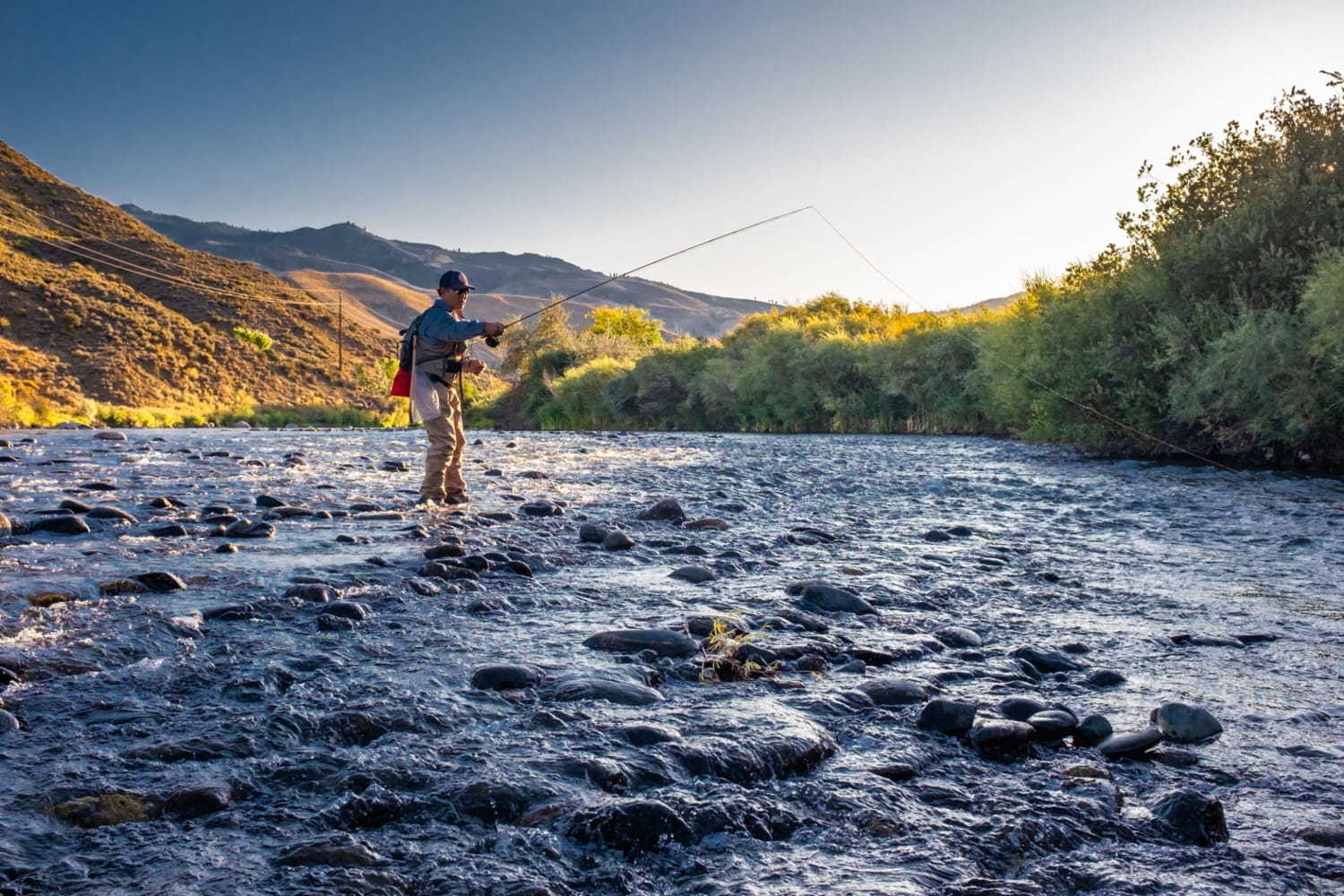Fly fishing in Spain is spectacular. It’s simply a unique experience with all the right conditions that will blow your mind away.
From the giant Trout to the elusive Barbel fish, there are more fish species that await you in Spain’s pristine waters.
But it is not just the abundance of fish you can catch in this part of the world. The country’s excellent weather, which is conducive to fly fishing, is another huge reason you should consider it for your next angling adventure.
Ready to learn more about what Spain has to offer for fly fishing enthusiasts? Here is everything you need to know to kickstart a worthwhile and memorable experience for fly fishermen just like yourself. Let’s get right into it.
Fly Fishing In Spain Is Like No Other
It is not an exaggeration. This is the reality of what it is like to go fly fishing in Spain.
The gorgeous Spanish Pyrenees is the best place to go for fly fishing as it is home to pristine streams, alpine lakes, and rivers that are teeming with Wild Zebra Trout.
In fact, the country is well-known worldwide for its fly fishing destinations. The literary genius, Ernest Hemingway, even talked about his great fishing adventure through the country’s Pyrenees.
No matter what time of the year you go, this beautiful nation is simply fortunate to have amazing weather. You can even go fly fishing 365 days a year! If you get lucky enough – and we guarantee you would – you can bask in the glory of catching the spectacular Zebra Trout. Spain, in particular, is famous for the brown trout, which is unlike anything on the planet.
But wait… There’s more! You can have many options on what fish species to catch such as the freshwater Barbel, Brook Trout, and the Rainbow Trout. These are found in the lakes, rivers, and streams in the Pyrenees.
Now, if you wish to head over to the high mountain rivers, then the best time to go fly fishing in those areas would be between March 1st and october 31st.
In March, Trout are quite active during mid-day. This is the time when the snow is about to melt away from the mountains.
As early Spring rolls around, particularly April and the first few weeks of May, you can expect more fish activity. The mountain rivers are perfectly cold as the snow has already thawed. Thus, you should go toward tributary streams and flat rivers for your catch.
Somewhere around the middle of May to the latter parts of October, high mountain rivers are your best destinations. The conditions are impeccable for fishing in the fantastic alpine rivers.
And as the winter months come, specifically in November and December, you can still catch yourself some fish. It is the time to catch yourself some trout and even get fortunate to bring home a plump, trophy trout.
Although December to February see fewer activities, there are still opportunities for fly fishermen during these months. You can also take advantage of dry fly fishing in January, which is absolutely possible.
Where To Go For Fly Fishing In Spain
Now that we’ve covered the why’s and when’s of fly fishing in this part of the world, let us talk about location. After all, it is important to be at the right place and at the right time to score big when fly fishing.
The Pyrenean rivers are hands down the best places to go fly fishing. You can also check out other rivers such as the Arga River, Aragon River, Noguera Ribagorzana River, Ara River, Esera River, and the Gallego River, to name a few.
While Spain is not exactly famous for trophy trout, this is not to say that you cannot expect to bag yourself one during your trip. In fact, you can head over to the Aragon Pre-Pyrenees. This is where it’s happening – a place to catch massive trout that can grow as long as 90 cm and weigh up to 10 lbs.
There may be quite a number of these fish but a word of caution – they are very challenging to catch. It takes finesse and professional experience to get yourself these elusive fish, albeit not impossible at all.
Fly Fishing Requirements In Spain
Before you jump into fly fishing in Spain, do keep in mind that you need to have some paperwork in place.
For instance, the country requires valid licenses and fishing permits to get started. You need to secure a daily fishing permit, which will enable you to go to fishing reserves – the best place to go for fly fishing. Regional administration offices are open from Monday to Friday – morning schedule only – and these are the places to go to obtain your permit.
It is also worth noting that there is such a thing as inter-autonomous fishing licenses, which give you the chance to fish in free waters around Murcia, Aragon, Castilla y Leon, Extremadura, Madrid, Galicia, Valencia, and Asturias. These are not reserves, and you may be able to secure yourself this important document for as little as 25 Euros.
Best Flies To Use For Fly Fishing
With your paperwork all set, now you need the right flies to use.
We highly recommend hooks 4 to 10 when you want a fly that closely resembles the action of certain terrestrial insects such as grasshoppers, beetles, and the like. These are also excellent for using during springtime, specifically when catching the large Plecoptera.
However, if you are keen on catching trout, then you would need hooks 14 to 18. They never fail to work when fly fishing in streams, lakes, and rivers just before the summer storms. These are also great during lower water levels in the river that can easily trick every trout.
But when it comes to indispensable flies to use, then it is without a doubt hooks 10 to 16. This fly drifts perfectly through the water and can be used no matter what situation or environment.
Final Word On Fly Fishing In Spain
If you yearn for a place that has the best weather, gorgeous water bodies and lush nature, then the best place to go fly fishing is Spain.
There is an abundance of fish species to catch, you can go fly fishing virtually all year round, and there are amazing places to go when you are not out in the water.
However, make sure you have valid paperwork to get started such as the daily fishing permit and a fishing license obtained from the regional administration office in question.
Also, you need to steer clear of Spain’s National Parks as these are off-limits to anglers and fly fishermen. You can only head to reserves when you have the right documents, as well as Pre-Park areas or the Peripheral Protection Zones.
Now that you know the basics of fly fishing in this part of the world, you are ready to catch yourself some trophy fish and bask in the wonders that Spain’s natural beauty has to offer.

